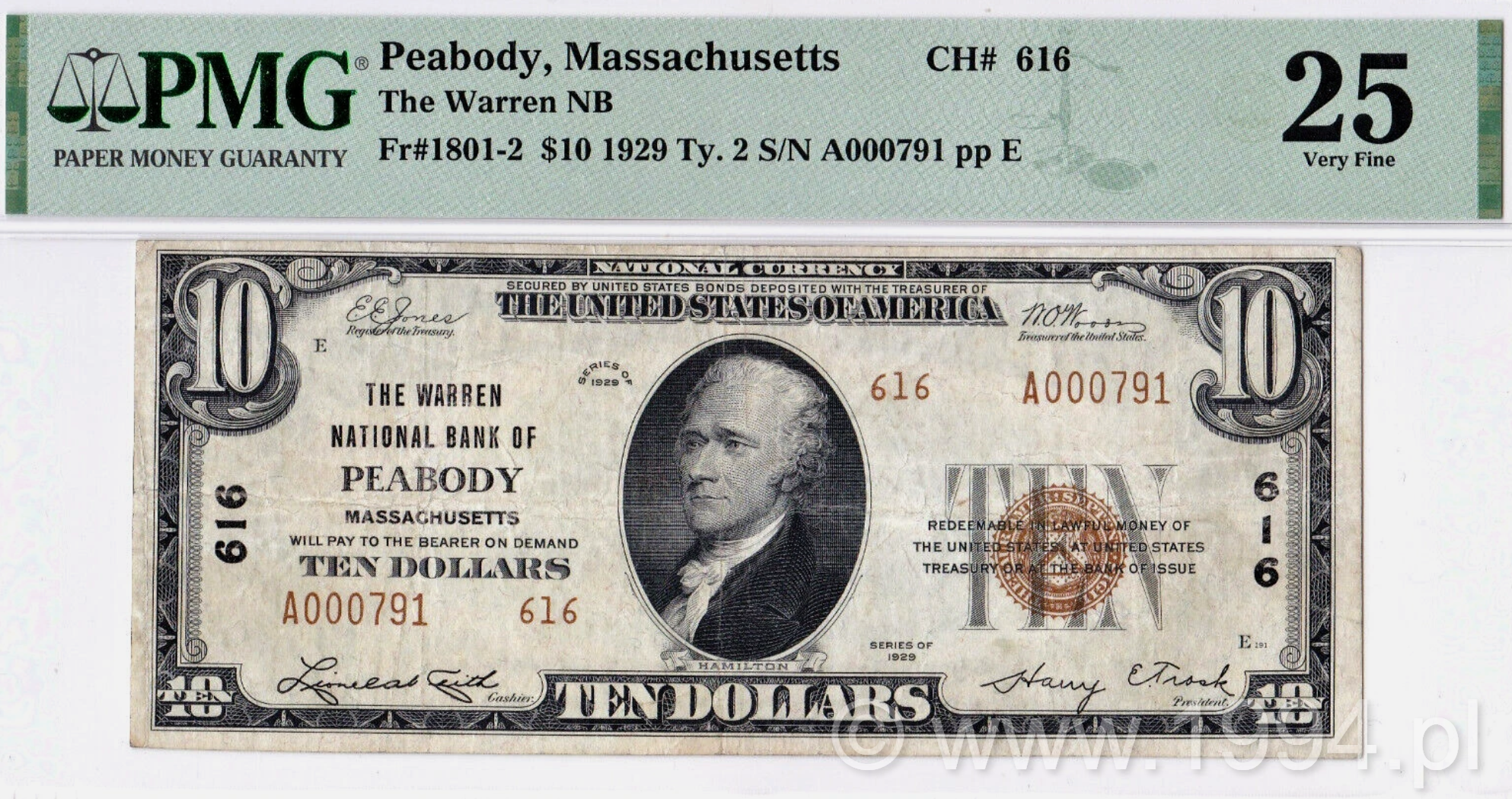Description and research notes
The Warren National Bank of Peabody, Massachusetts, Charter 616, was organized on December 8 1864 as the successor to the pre-Civil-War Warren Bank of South Danvers. When the town was renamed Peabody in 1872, the bank adopted the new name as well. Its charter therefore spans the entire National Banking era—from Abraham Lincoln’s first bond-secured issues to the consolidation of the 1930s—representing seventy years of uninterrupted local service.
During that span, Peabody transformed from a small leather-tanning village into the self-proclaimed 'Leather Capital of the World.' The Warren National financed that industrial growth, providing credit lines to tanneries, shoe factories, and local merchants who supplied the Boston market. Leadership remained remarkably stable across generations: the Allen, Merrill, Osborn, and Trask families held cashier and president posts through the 1860s – 1930s, maintaining the conservative management that kept the bank open past 1935.
This note is a Series of 1929 Type 2 ten-dollar issue—the final form of National Currency printed before the system’s end in 1935. Type 2s can be identified by their duplicate charter numbers and denomination counters printed beside Alexander Hamilton’s portrait, a layout unique to this closing chapter. The charter number 616 appears twice, marking the Peabody origin at a glance. Serial A0002343A represents a very late print range; few sheets were produced before issuance ceased nationwide.
No other ten-dollar notes are recorded for this charter, and no five- or twenty-dollar denominations have surfaced, making this example the only known small-size survivor. Certified PMG 25 Very Fine, it is cataloged as a true discovery note—completing a blank line in the Massachusetts census and preserving the final physical trace of the Warren National Bank’s seventy-year story.
